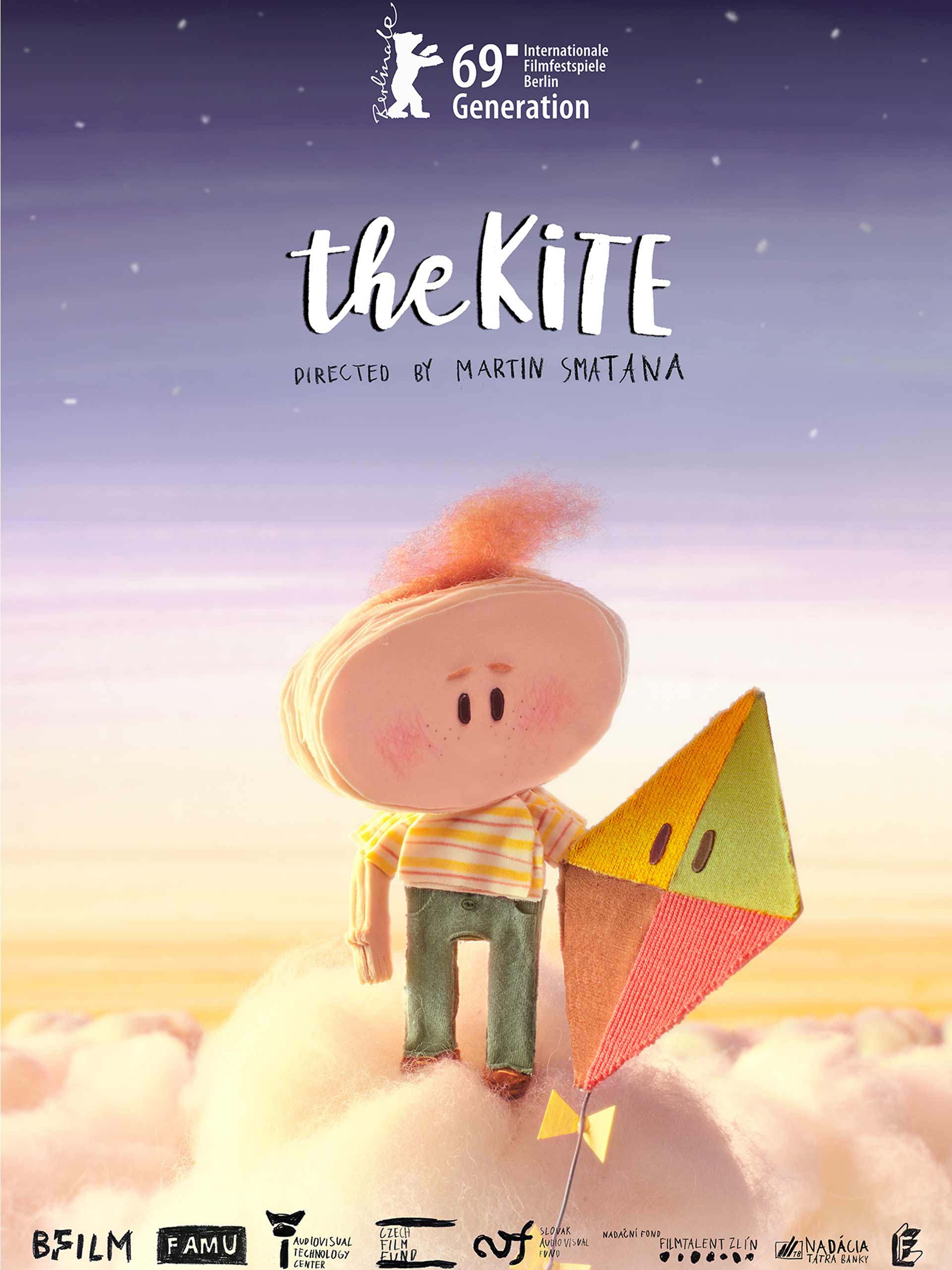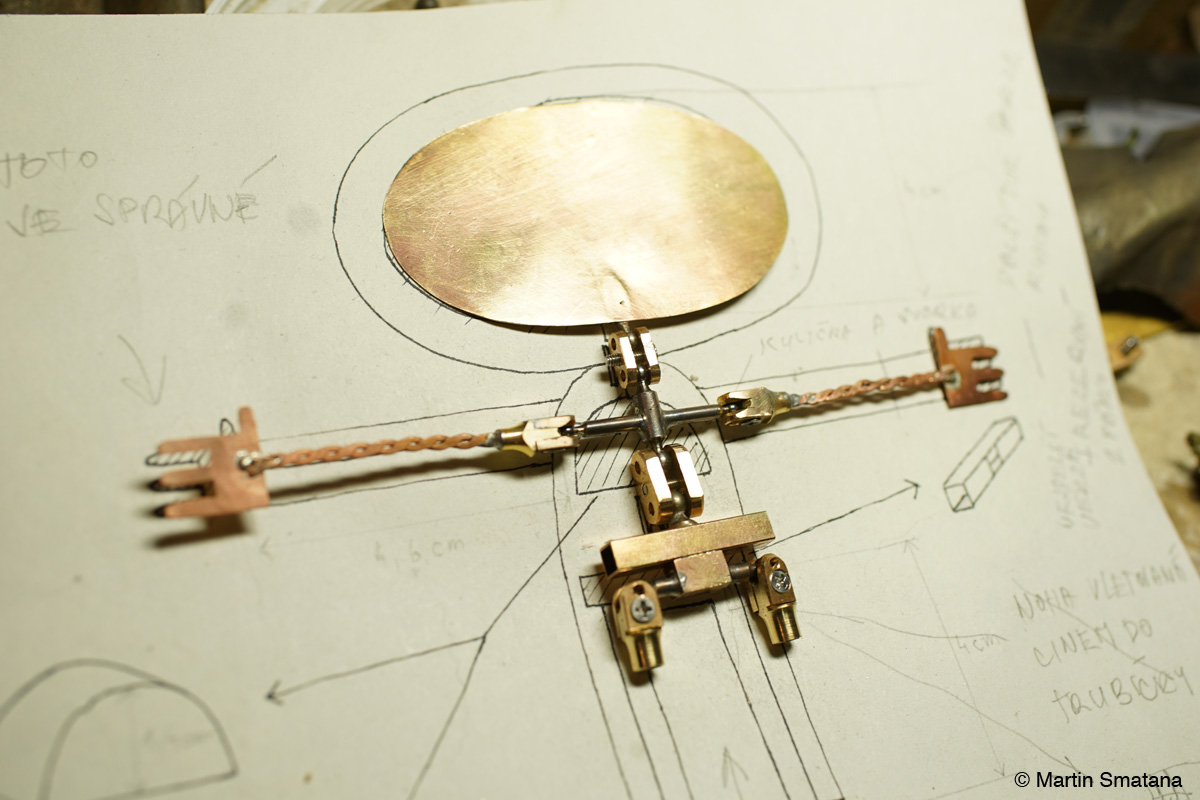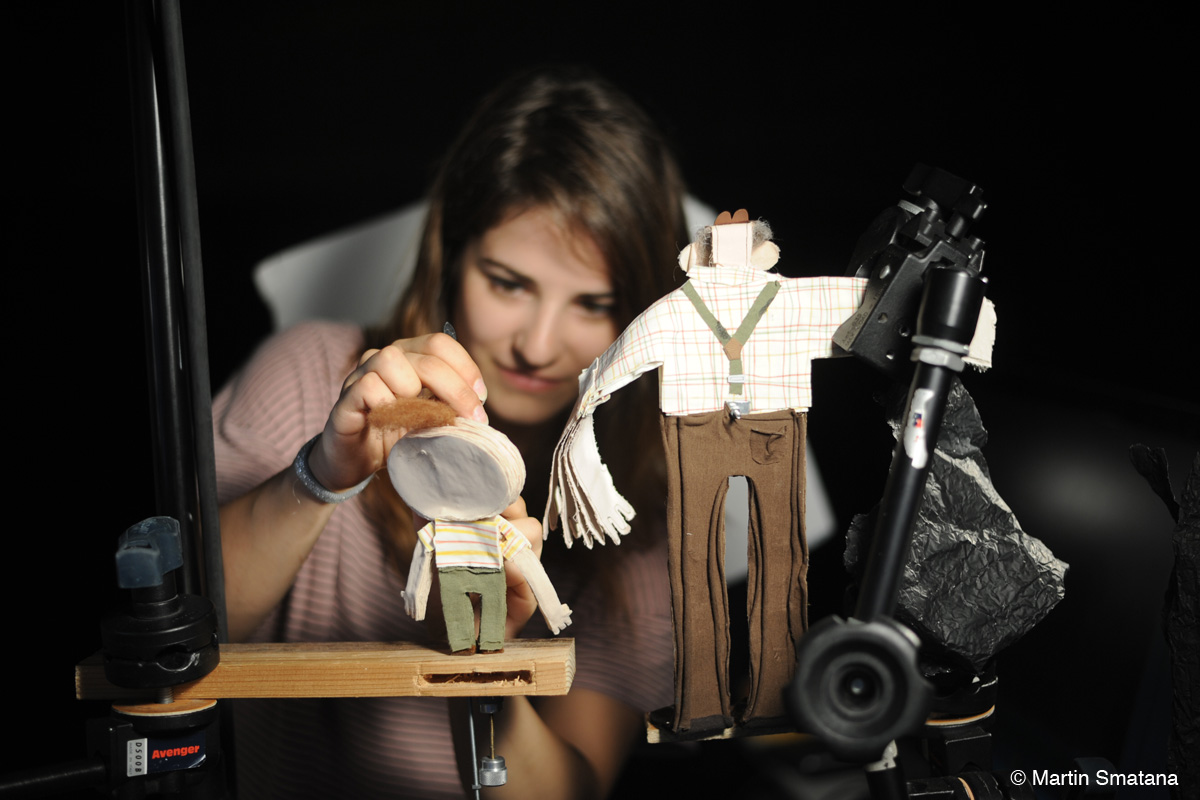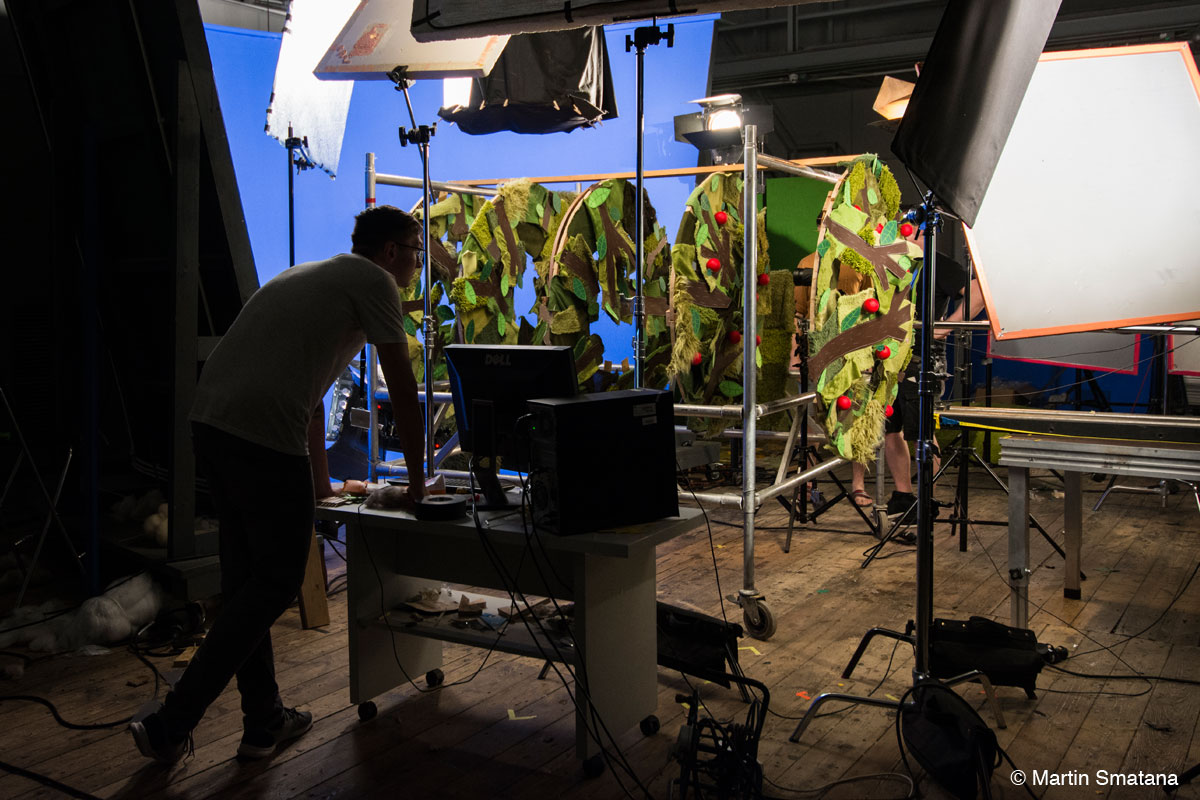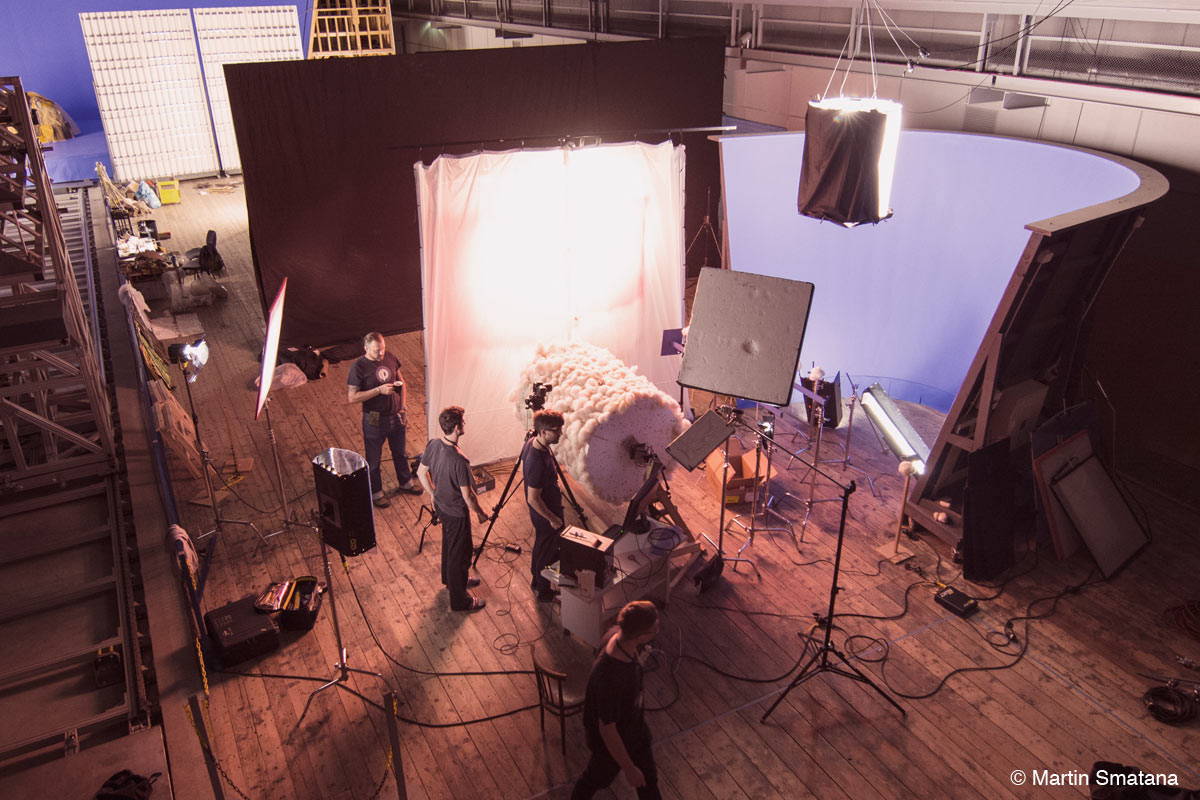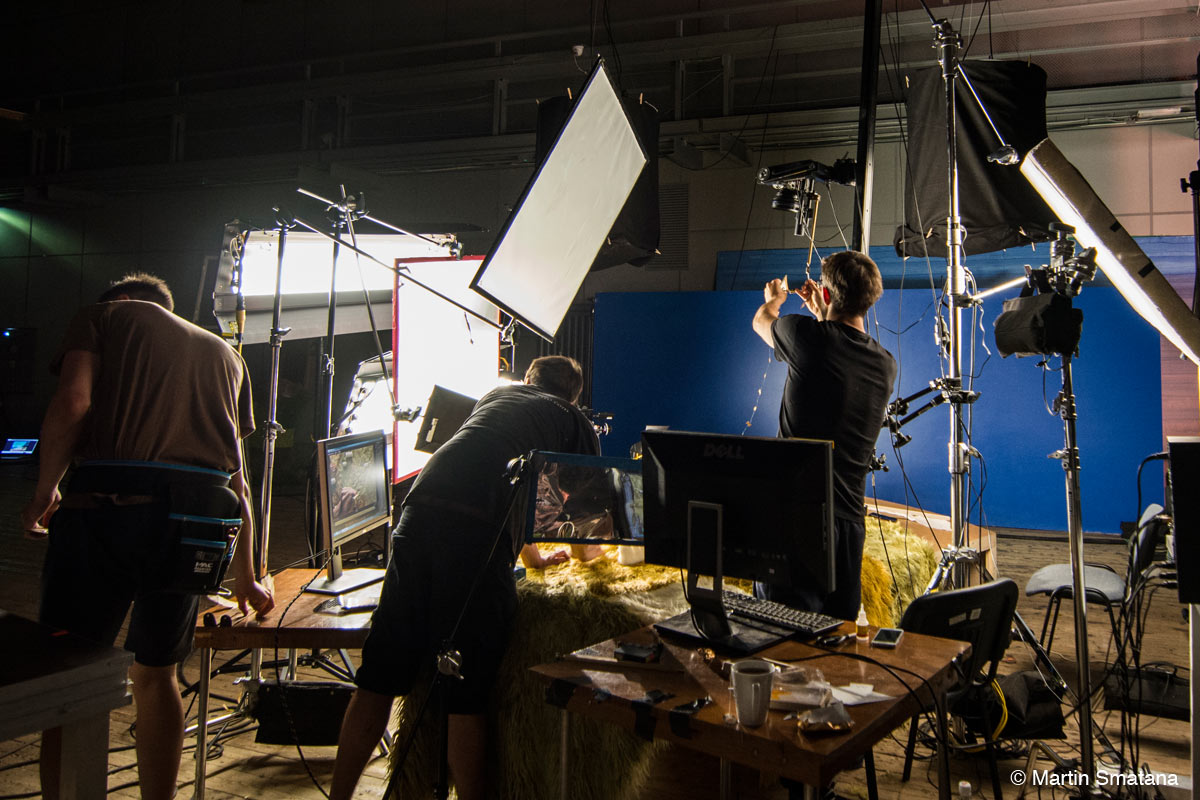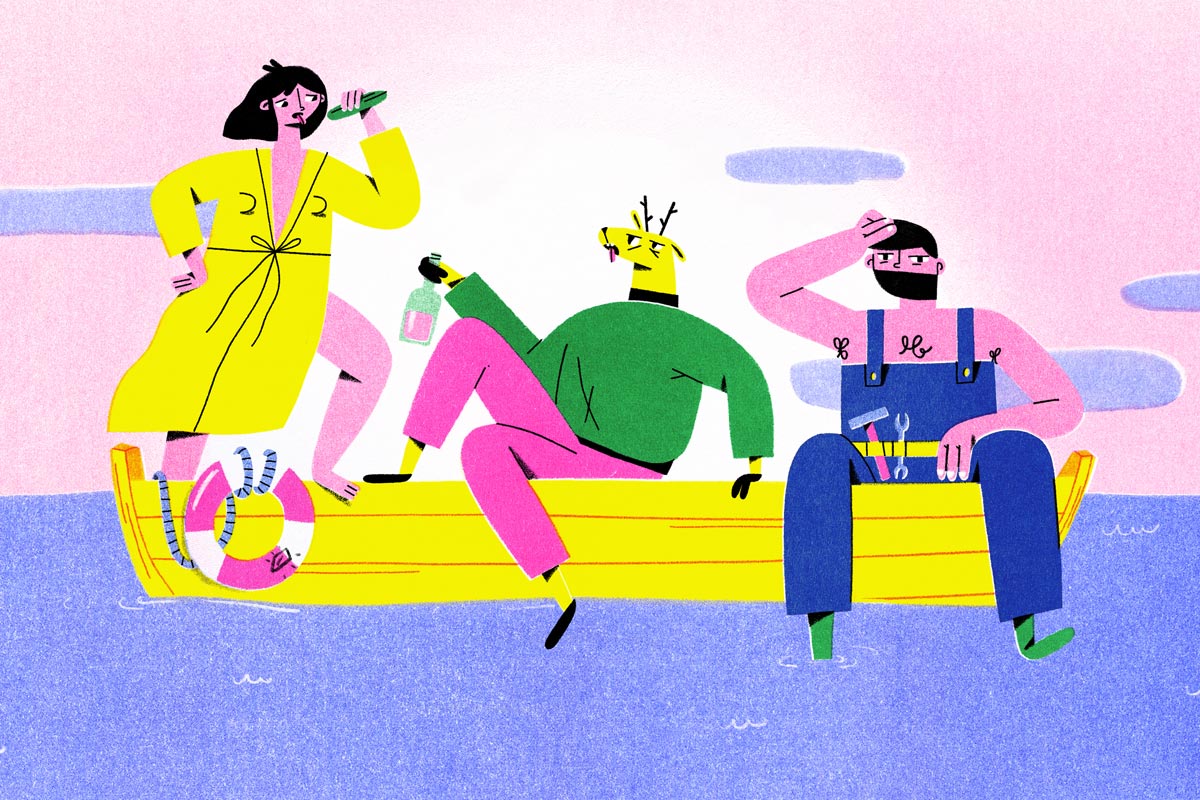This is part of an interview series, in collaboration with CEE Animation. We would like to introduce award-winning animated short films directed by upcoming young creators from the Central and Eastern Europe (CEE) region and the story behind the creation of each film. We give big thanks to Aneta Ozorek and Marta Jallageas for their great support in this series.
The Kite
Synopsis
Summer is coming to the end, the fruit is growing ripe on the trees. Grandpa gives his grandson a kite. As the boy is tossed around in the air, Grandpa catches him. Then the leaves fall and Grandpa has grown weak. A strong autumn wind carries him off into the cloudy sky. Winter comes, then springtime. A warm breeze brings them together again.
Film Credits
Director: Martin Smatana
Author: Martin Smatana
Animator: Martin Smatana
Producer: Peter Badač (BFILM, Czech Republic)
Sound Design: Vierka Marinová
Set Design: Martin Smatana, Františka Benčatová, Hana Kocurková and Tjaša Frumen
The Kite is a dialogueless stop-motion short film for all ages, which gently tells the story of a boy and his grandfather on the theme of death in a simple and thoughtful visual style. The film is directed by Slovakian film director Martin Smatana, who studied animation at FAMU in Prague in Czech Republic, and was premiered at Berlin International Film Festival (Berlinale) 2019.
Martin has made an excellent visual achievement in explaining death and the amount of time left in one’s life, which is one of the most difficult things to understand for all kids, in a clear but indirect manner with cute designs of the characters and universe in a concise visual metaphor. The film has brought him 27 awards internationally so far such as the Young Audience Award at Annecy Festival 2019, the Tricks for Kids Award at Stuttgart International Festival of Animated Film (ITFS) 2019, Best Children Film at the 27th Anima Mundi Film Festival and Best Student Animation Film at the 16th In the Palace International Short Film Festival.
We are delighted to deliver you the insightful words from Martin Smatana on his creation of The Kite.
Interview with Martin Smatana
Hideki Nagaishi (HN): Where did the initial idea of the story come from?
Martin Smatana: The idea came from my childhood – when I was a kid, I used to play with a kite with my grandfather, and we also talked a lot about life with him. I was asking a lot of existential questions, like where do people go after they die, and he told me the simple story, “as the man gets older, he gets thinner and thinner, and in the end of his life he is as thin as a sheet of paper, so one day the wind blows him up to the sky”.
HN: Could you please let us know the message or experience you intended to deliver to the audience through the film?
Martin Smatana: On one hand, I would like to show that all living creatures must die one day, but on the other hand, to show that someone´s journey doesn’t have to end with a death.
I also wanted to show how important what we have learned from the people who are no longer with us is and what value they gave us. In this film, the grandfather taught the boy how to fly a kite, and thanks to it, boy could use this skill when grandpa was not with him anymore. The boy managed to fly the kite by himself and share a memory with his grandfather again.
HN: How did you come up with the idea of the puppets of the boy and his grandfather being made by layers of fabric and having the number of layers express the amount of time left in their life? I’m also interested in the idea of the kite being the metaphor of the connection between the worlds of life and death. They are very clever ways of visually expressing human life and death simply and gently without expressing death directly, which could upset the younger audience.
Martin Smatana: My idea was to make a film about a death without spoken words, but in a simple, symbolic and metaphoric way which would be understandable for children. I wanted to express passing time visually, so with Ondrej Nedved, the director of photography, we came up with the idea that the puppets are made out of layers, which somehow symbolizes their age. In the film we see that the grandfather counts his layers and is worried, because there is only a few of them left. The boy, on the other hand, is 3-dimensional because he has his whole life in front of him.
On one hand, it was quite a risky decision – we were really afraid that the puppets will look like onions and children will be scared of it, but on the other hand, this stylization goes together with the story quite well, which is the most important for us.
Yes, the kite is not only a toy, but in this story, it is something which connects the boy and the grandfather – the boy always wants to fly high in the sky, and the grandfather keeps an eye on him from the ground and catching him safely. But later the wind takes the poor grandfather up to the sky and a boy stays at the ground alone. The kite is the only thing which forever reminds him of his grandfather.
HN: I felt this film says that death is not always about being apart from each other forever. Is that what you intended to tell or do you have another message on human relationships after death in the film?
Martin Smatana: Exactly. I want to say that the death doesn’t have to necessarily be the end of the existence. And also to show that on the time someone passes away, he might actually feel much better after that, no longer suffering and to be free.
When I was a kid, I imagined Heaven as a big space full of soft, fluffy clouds, so everybody who dies can fly there, jump to the clouds, dive in them and swim – just to have as much fun as one wants, which is actually not that bad in the end, right?
I transferred that idea to the final scene of the film, when the boy flies in the clouds with his grandfather and enjoys this little moment.
HN: Could you please let us know your intention of each season in the film? I felt that transition of the feelings are synchronized with each season.
Martin Smatana: Yes, there are four different seasons in the film – the story starts in the summer, when the grandfather is full of strength and optimism, running with the boy and flying the kite. But as autumn comes and leaves fall down, the grandfather is weaker. Then the long, cold winter comes, and when the snow disappears with the spring breeze, the boy finds the old kite again.
HN: How did you design the visuals of the characters and the universe? What did you take care of when you designed them? I felt that the visuals of the film are appealing, giving the film a soft impression and enables children to dive into the story.
Martin Smatana: The idea was to create almost all the environment with textile materials, because, for example, we wanted to express the presence of the wind, which is almost like a third character in the film.
We covered all the scenes with various hairy materials. We visited every single second hand shop in Prague, Czech Republic, to buy a lot of sweaters. Also, many of our friends donated us their old clothes, which turned into the scenography. We order some hairy carpets from Poland and then we were moving them hair by hair, to express the movement of the wind.
We even had a wind-animator, Piotrek Chmielewski, who was checking references frame-by-frame on how the wind moves in reality.
HN: Could you please let us know about composing the music for the film? I think that the music is helping the audience know the emotion of the boy in each scene well.
Martin Smatana: The music was composed by Aliaksandr Yasinski, the very talented Byelorussian music composer and accordion player. The process of composing the music to this film was very creative – I was visiting Aliaksandr in his home almost every afternoon and he was playing his accordion and improvising while screening the silent film. Every time we liked some part of what he composed, we recorded it.
Later, Aliaksandr also wrote the scores for different instruments and in the end we recorded the music with a small symphonic orchestra in Prague. It was the very first time Aliaksandr wrote music for an animated film.
HN: I would like to hear how you’ve encountered stop-motion animation and the reason why you chose stop-motion as your medium for telling stories.
Martin Smatana: I do stop-motion animation because I like working manually and I like to use different materials and combine them. I like the feeling that everything you see in the film is made out of real materials, you can touch it because it actually exists in reality, not only virtually in computer.
I also like when the film is not super clean, like some computer-generated films which can look very sterile, because I like all those little mistakes and footprints which puppet-building brings. And I am not good at drawing, so I hide that behind stop motion!




